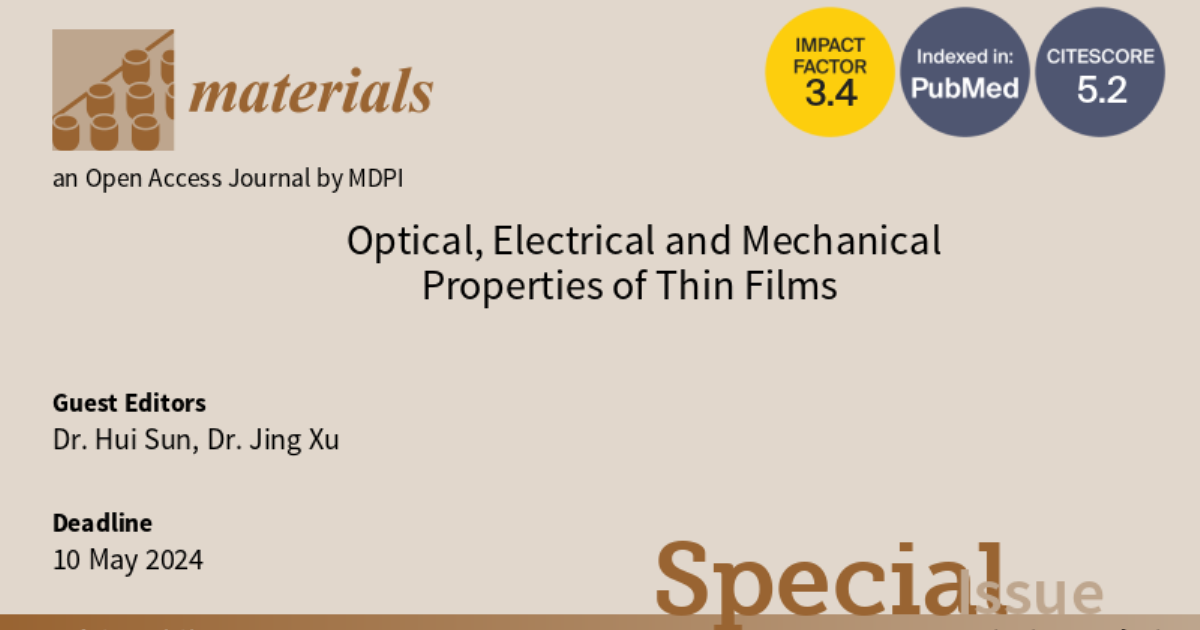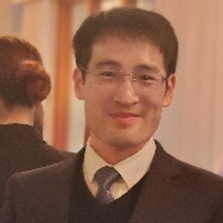Optical, Electrical and Mechanical Properties of Thin Films
A special issue of Materials (ISSN 1996-1944). This special issue belongs to the section "Thin Films and Interfaces".
Deadline for manuscript submissions: 10 May 2024 | Viewed by 8020

Special Issue Editors
Interests: thin films deposition; transparent conductive films; optoelectronic devices; photocatalyst
Special Issue Information
Dear Colleagues,
Functional thin films have been widely used in the fields of micro- and nanoelectronics, optical communication, biological systems, and mechanical equipment in devices such as thin-film transistors, planar waveguides, solar elements, LEDs, gas sensors, and mechanical components. The synthesis of these thin films and the acquisition of information about their optical, electronic, mechanical, and tribological properties, as well as their wettability, are very important for the development of new stable devices based on them.
Studying the factors involved in the properties of thin films allows for the determination of many interesting properties of these nanomaterials, which can be made of inorganic, organic, metal, dielectric, or hybrid materials. This is significant given the wide range of practical applications that are implicated. This Special Issue of Materials will include original research articles and review papers written by researchers on the topic of Optical, Electrical, and Mechanical Properties of Thin Films. Investigations into other performance parameters of thin films are also welcome.
I look forward to receiving your contributions.
Dr. Hui Sun
Dr. Jing Xu
Guest Editors
Manuscript Submission Information
Manuscripts should be submitted online at www.mdpi.com by registering and logging in to this website. Once you are registered, click here to go to the submission form. Manuscripts can be submitted until the deadline. All submissions that pass pre-check are peer-reviewed. Accepted papers will be published continuously in the journal (as soon as accepted) and will be listed together on the special issue website. Research articles, review articles as well as short communications are invited. For planned papers, a title and short abstract (about 100 words) can be sent to the Editorial Office for announcement on this website.
Submitted manuscripts should not have been published previously, nor be under consideration for publication elsewhere (except conference proceedings papers). All manuscripts are thoroughly refereed through a single-blind peer-review process. A guide for authors and other relevant information for submission of manuscripts is available on the Instructions for Authors page. Materials is an international peer-reviewed open access semimonthly journal published by MDPI.
Please visit the Instructions for Authors page before submitting a manuscript. The Article Processing Charge (APC) for publication in this open access journal is 2600 CHF (Swiss Francs). Submitted papers should be well formatted and use good English. Authors may use MDPI's English editing service prior to publication or during author revisions.
Keywords
- thin films
- coating
- deposition process
- electrical properties
- optical properties
- tribology
- lubrication
- superhydrophobic
- wettability
- functional materials, thin films and devices







